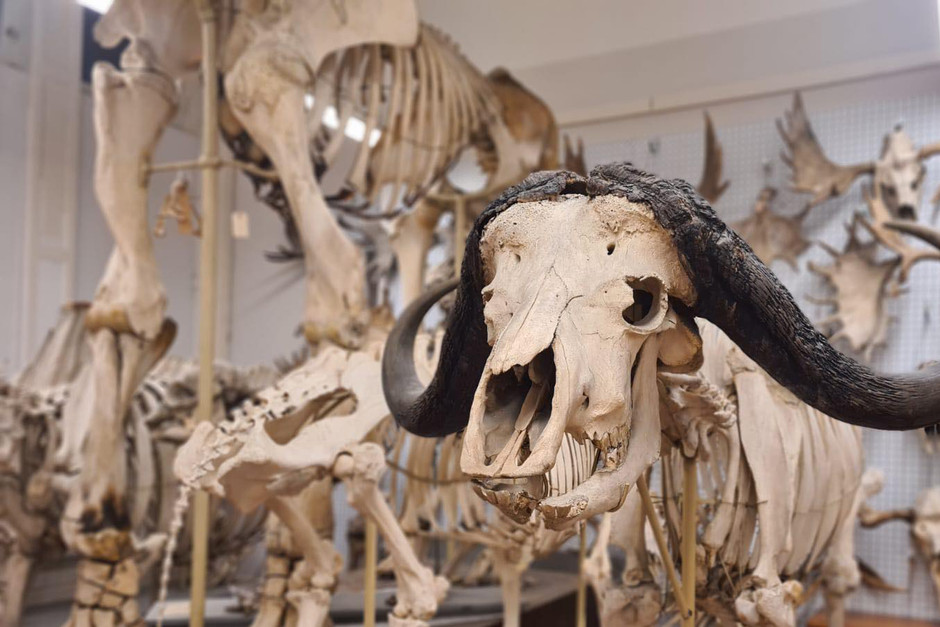Birds
Our bird collection is one of the larger in the world. The material includes skins, skeletons, specimen in alcohol, eggs clutches, as well as blood and tissue samples. The skin collection contains about 65% of the world's bird species. The skeleton collection is relatively incomplete, but we have a good representation of Swedish birds.
The last major review of bird type specimens at the Swedish Museum of Natural History was conducted by Nils Gyldenstolpe in 1926, and the inventory includes a total of 283 types.
Mammals
We manage an extensive collection of mammals with approximately 120,000 specimens, mainly in the form of skeletons and skins, but also alcohol-preserved animals and tissue samples. Some of the animals are mounted and used in the museum's exhibition activities. However, the collection is primarily used in research contexts and for educational purposes.
The roots of the collection trace back to the 18th century, perhaps even the late 17th century, and encompass a little more than 40% of the world's known mammal species. They come from all around the world, with a focus on Swedish and European species, as well as large collections from South America, Africa, and Southeast Asia. Mammals species that are state game are particularly well represented.
Fish
The Swedish fauna is well represented in our collection for the more common species. However, most of the collections include foreign material from all over the world, with fish from tropical and subtropical areas in South America and Asia dominating. The collection contains around 500,000 specimens in 70,000 jars, most of which are databased. Of these, approx. 1,700 items constitute type material. Almost all of our fish specimens are preserved in alcohol. There are also a smaller number of skeletons, single skins, many mounted fish, transparent so-called alizarin preparations for special research projects, and a small number of otoliths.
Amphibians and reptiles
The Swedish amphibian and reptile fauna are well represented in our collection, partly due to the small number of species found in Sweden. The majority of our collections therefore consist of species from tropical and subtropical regions. Within our collection, there are about 50,000 specimens housed in 10,000 jars, with roughly half of them registered in our collection database.
Most of the collection is preserved in alcohol, but there are also mounted animals, skeletons, and skins. The type collection is relatively small, comprising about 250 type specimens, and is dominated by species described by L. G. Andersson, C. Linné, E. Lönnberg, and H. Rendahl.


